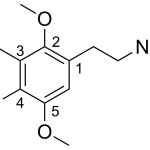Are you wondering how long an opioid high lasts? This is a common question among people who use opioids, as well as their loved ones and medical professionals. Opioids are drugs that are commonly used to manage pain, but they can also create a sense of euphoria and relaxation when taken in high doses.
In this article, we will explore the surprising answer to the question “How long does an opioid high last?” We will also discuss the effects of opioids on the body, the risks of opioid use, and what to do if you or someone you know is struggling with opioid addiction.
Introduction
Opioids are a class of drugs that include prescription pain relievers like oxycodone, hydrocodone, and fentanyl, as well as illegal drugs like heroin. These drugs are highly addictive and can lead to serious health consequences, including overdose and death.
The opioid epidemic has become a major public health crisis in many countries, with millions of people struggling with opioid addiction and thousands of people dying from opioid-related overdoses each year.
Understanding how opioids work in the body and how long their effects last can help people make informed decisions about using these drugs and seeking help if they are struggling with addiction.
How Opioids Affect the Body
Opioids work by attaching to specific receptors in the brain and blocking pain signals. They also stimulate the release of dopamine, a neurotransmitter that is associated with pleasure and reward. This can create a sense of euphoria and relaxation in the user.
However, opioids also have a range of side effects, including drowsiness, nausea, constipation, slowed breathing, and confusion. These effects can be especially dangerous when opioids are taken in high doses or combined with other drugs or alcohol.
How Long Does an Opioid High Last?
The surprising answer to the question “How long does an opioid high last?” is that it depends on a variety of factors, including the type of opioid used, the dose taken, the method of administration, and the user’s individual metabolism and tolerance.
Short-acting opioids like heroin typically produce a high that lasts for several hours, while longer-acting opioids like methadone can produce effects that last for up to 24 hours or more.
However, the duration of the high can also be influenced by the user’s individual physiology and tolerance to opioids. Over time, frequent use of opioids can lead to a higher tolerance, meaning that the user will need to take higher doses to achieve the same effects. This can also make it more difficult to stop using opioids and can increase the risk of overdose.
Risks of Opioid Use
While opioids can be effective for managing pain when used as prescribed, they also carry a range of risks and side effects. In addition to the potential for addiction and overdose, opioid use can lead to a range of health problems, including:
– Respiratory depression and slowed breathing
– Increased risk of infections, especially when opioids are injected
– Nausea, vomiting, and constipation
– Hormonal imbalances and sexual dysfunction
– Liver damage and other organ damage
– Cognitive impairment and memory problems
What to Do If You or Someone You Know Is Struggling with Opioid Addiction
If you or someone you know is struggling with opioid addiction, it is important to seek help as soon as possible. Opioid addiction can be difficult to overcome on your own, and professional treatment is often necessary to achieve long-term recovery.
There are a range of treatment options available for opioid addiction, including:
– Medication-assisted treatment, which uses medications like methadone or buprenorphine to help manage withdrawal symptoms
Treatment Options for Opioid Addiction
Medication-assisted treatment (MAT) is a common treatment option for opioid addiction. This approach uses medications like methadone or buprenorphine to help manage withdrawal symptoms and cravings, while also providing behavioral therapy and counseling to address the underlying issues that contribute to addiction.
MAT has been shown to be highly effective in treating opioid addiction, reducing the risk of relapse and overdose. It is important to note, however, that MAT is not a one-size-fits-all approach, and it may not be the right choice for everyone.
Other treatment options for opioid addiction include:
– Inpatient or outpatient rehabilitation programs, which provide a structured environment for recovery and access to counseling and therapy
– Cognitive-behavioral therapy (CBT), which helps individuals identify and change negative thought patterns and behaviors that contribute to addiction
– Support groups like Narcotics Anonymous (NA), which provide a community of peers who understand the challenges of addiction and can offer support and guidance
FAQs about Opioid Use and Addiction
1. What are some signs that someone may be struggling with opioid addiction?
Answer: Signs of opioid addiction may include physical symptoms like pinpoint pupils, drowsiness, and slowed breathing, as well as behavioral changes like withdrawal from social activities and neglect of personal responsibilities.
2. Can you become addicted to opioids after taking them as prescribed by a doctor?
Answer: Yes, it is possible to become addicted to opioids even when taking them as prescribed by a doctor. This is why it is important to use these medications only as directed and to discuss any concerns or side effects with your healthcare provider.
3. Can opioid addiction be treated with medications?
Answer: Yes, medication-assisted treatment (MAT) is a highly effective treatment option for opioid addiction. Medications like methadone, buprenorphine, and naltrexone can help manage withdrawal symptoms and cravings while also providing behavioral therapy and counseling.
4. What are the risks of long-term opioid use?
Answer: Long-term opioid use can lead to a range of health problems, including respiratory depression, increased risk of infections, hormonal imbalances, and organ damage.
5. Is it possible to overdose on opioids?
Answer: Yes, opioid overdose is a serious and potentially life-threatening condition. Symptoms of opioid overdose may include pinpoint pupils, slowed breathing, and unconsciousness. If you suspect someone has overdosed on opioids, it is important to seek emergency medical attention immediately.
6. What should I do if I suspect someone I know is struggling with opioid addiction?
Answer: If you suspect someone you know is struggling with opioid addiction, it is important to express your concerns and encourage them to seek help. You can also offer to help them find treatment resources and support them throughout the recovery process.
Conclusion
In conclusion, the surprising answer to the question “How long does an opioid high last?” is that it depends on a variety of factors. While opioids can be effective for managing pain when used as prescribed, they also carry a range of risks and side effects and can be highly addictive.
If you or someone you know is struggling with opioid addiction, it is important to seek help as soon as possible. Treatment options like medication-assisted treatment, therapy, and support groups can help individuals achieve long-term recovery and improve their overall health and well-being.
Remember, opioid addiction is a treatable condition, and with the right support and resources, it is possible to overcome addiction and build a healthy, fulfilling life in recovery.

 BARBITURATE
BARBITURATE BENZODIAZEPINES
BENZODIAZEPINES PSYCHEDELICS
PSYCHEDELICS STIMULANTS
STIMULANTS